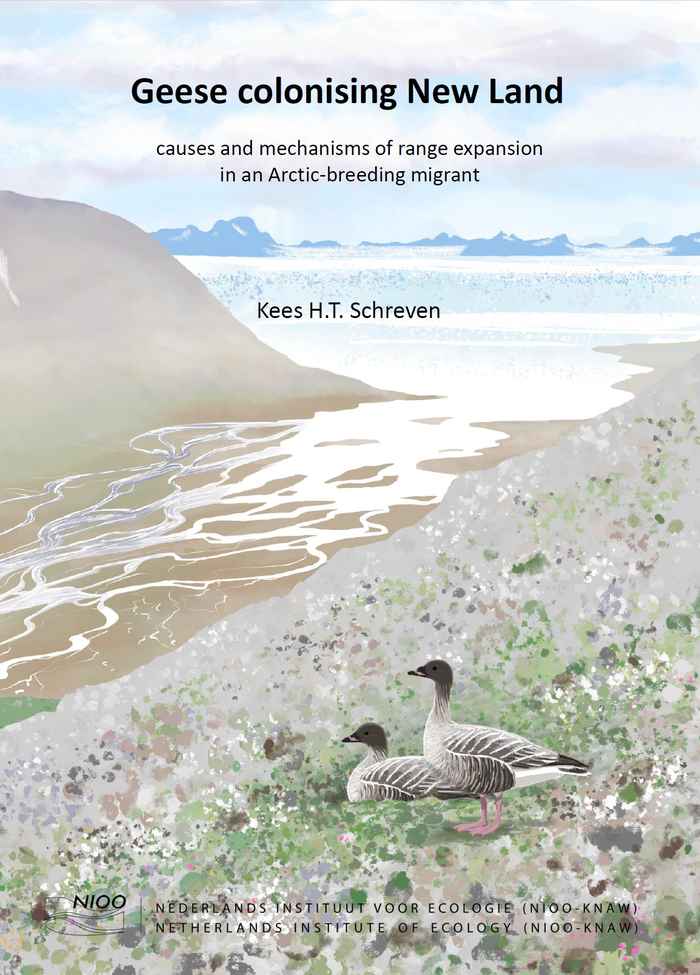PhD defence ceremony by Kees Schreven
- Date
- 8 September 2023
- Time
- 11:00
- Location
- Aula - Lutherse kerk

Geese Colonising New Land: Causes and Mechanisms of Range Expansion in an Arctic-Breeding Migrant
The world is changing rapidly. Understanding how animals are dealing with this is important for sustainability. The Arctic sees the fastest climate change, and spring advances rapidly. In order to cope, migratory arctic birds may arrive earlier, or move to colder areas. Recently, Pink-footed geese (Anser brachyrhynchus), originally breeding on Svalbard, have colonised Novaya Zemlya via a new migration route. We study both routes and track geese with GPS-transmitters, by which we can detect nesting attempts reliably. In Svalbard, spring advanced rapidly but timing of goose migration and breeding did not keep up. Novaya Zemlya was colder and its spring later, and although egg-laying was later than in Svalbard, hatching was better matched with local food abundance. Novaya Zemlya geese had larger heads, longer pre-laying intervals, and better body condition in spring than Svalbard geese. In both areas, early springs led to more (successful) breeding, but geese in Novaya Zemlya performed better at a given spring onset. Still, reproductive output was similar in both areas. Pink-footed geese may have discovered Novaya Zemlya by vagrancy due to strong winds during sea crossings, or may have followed Taiga Bean Geese that fly to Novaya Zemlya to moult. Pink-footed geese of old and new breeding areas did not differ in personality, but Svalbard geese using the new route were less dominant than other geese. These possibly explored the new route, avoiding competition on the old route. Genetically, geese of Svalbard and Novaya Zemlya were not (yet) differentiated. Concluding, Pink-footed geese seem to cope with change at least in part by range expansion, which likely resulted from an interplay of drivers and facilitators.